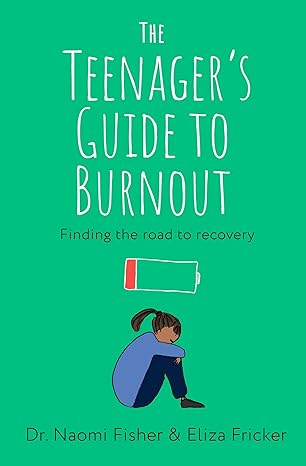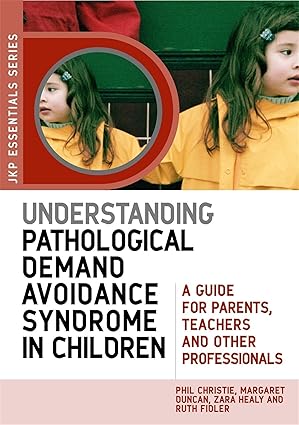I recently reviewed Understanding Pathological Demand Avoidance Syndrome in Children, this book follows that theme – I’m reviewing The Teenager’s Guide to Burnout by Dr Naomi Fisher and Eliza Fricker. The Teenager’s Guide is a far easier read, directed at teenagers rather than adults although it includes a section at the end for adults.
Dr Naomi Fisher is a clinical psychologist well-known for her work on the mental health of children, parenting and schooling. She experienced many different schools in different countries as a result of her parents’ life-style. Eliza Fricker is an illustrator and author and has experience of the issues covered in the book and drew the illustrations.
The book starts with some generally comments about stress and burnout which could apply to anyone, it’s useful in setting the scene although I did worry whether I’d got the right book. Perhaps surprisingly the book doesn’t mention “autistic burnout” except in the final section for adults where Fisher says that burnout is burnout, some children are neurodivergent but that’s not the key feature.
The action quickly moves on to school which in general is what will cause burnout in teenagers. The process of burnout is divided into four sections:
- Breakdown – burnout often seems to come out of the blue, a child is “fine at school” and then suddenly can no longer go in. It is traumatic for parents as well as children. Fisher (rightly) attributes this largely to the school environment and emphasises that a return to school should not be the short term gaol. This stage is about re-connecting with the child, it turns out our family sessions of Fortnite were actually a pretty good thing to do!;
- Repair – this is when we start to find the new normal with a child at home not at school, and a family rearranged to accommodate. There is often sadness here at the life apparently lost. This stage is about the teenager trying to find some enjoyment in life;
- Learning from the journey – this is about learning about what went wrong; why was it that school became unbearable? Sometimes as parents we will discover that our well meaning efforts were just pressuring our child and worsening the problem. I think of our efforts to get our son to see a counsellor here;
- The Road Ahead – this is about finding another path to education, outside of mainstream school. Part of the current process is, typically, to pressure children by telling them that mainstream school is the only option and they will be a failure if they don’t attend. Fisher describes it as a myth, really it is an outright lie;
Fisher believes that a key mistake most people make is to see a return to mainstream school as the goal throughout this process. If an adult had a burnout as a result of a high stress job we probably wouldn’t see going back to that job as the goal. She sees the school environment as being the problem which reflects the WHO recognition of burnout as an “occupational phenomena”. She cites increasingly high pressure methods used in schools to control behaviour (see SLANT), enforce attendance (“your parents will be fined and may go to prison if you don’t go to school”) and recover the academic progress lost during the pandemic. I have to say I agree with all of this.
Fisher is scathing about schools, pointing out her experience of so many different school systems highlights which school rules are in fact unnecessary she mentions UK uniform rules and the UK tradition of calling teachers “Sir and Miss” as examples of this. The world doesn’t end if you don’t wear a school uniform and address your teachers by their first name.
Fisher says a little about why burnout is an increasing problem, some of it is changes in the world – particularly the pandemic. She mentions world events like climate change meaning there is little to hope for in the future, as a child of the seventies and eighties I can say there is no change there – we feared nuclear annihilation! She says that in the past those suffering from burnout might have been diagnosed as having glandular fever or simply truants. It strikes me that in the past twenty years or so we have been become (on the face of it) much more understanding of mental health issues in adults but we don’t extend that sympathy to children.
I found her comments on friends and social development interesting, one of the key worries of those educating at home is the lack of social interactions. However, Fisher points out that frequently younger children have a quite limited social circle covering only family and relatives. Friendship at secondary schools has the air of protection, being in with a group so you are not alone at lunch time or the school gate, not the target of bullying. That said she provides a long list of venues outside school where teenagers might find new friends.
I suspect this book will be mainly read by parents; teenagers in the process of burnout are likely only receptive to it at stage 4 (The Road Ahead). The best time for an adult to get this book would be prior to stage 1, perhaps when the first signs of issues at school appear but it is useful at any time in the process. I heartily wish no one needed this book.
The Teenager’s Guide is great: for affirming we are not alone, for providing reassurance and also for providing some strategies to try for a better future. Although it is purportedly written for teenagers it is fine for adults, making for an easy read with short recaps at the end of each chapter. There are some handy tables / exercises which also act as summaries.


